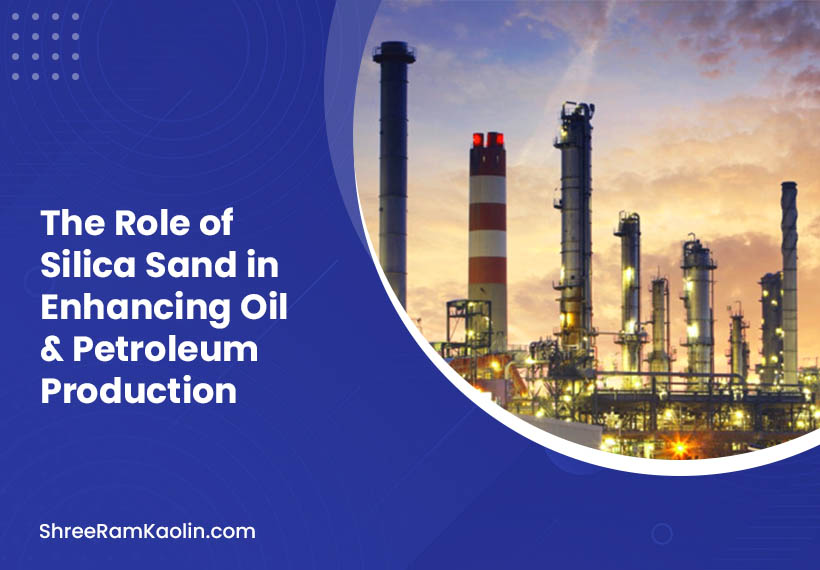The Role of Silica Sand in Enhancing Oil & Petroleum Production

Silica sand is essential in oil and petroleum production, contributing significantly to efficiency and output across this complex global industry. This article delves deep into silica’s impactful contribution, varied uses, innovations shaping its future use, and the significance thereof in the oil & petroleum sectors.
What is Silica sand?
Silica sand is mainly composed of silicon dioxide (SiO2). This material stands out for its high melting point, strength, and chemical resistance – qualities that make it essential in many industrial processes, including oil and petroleum production.
Sources and Extraction
Silica sand is typically extracted from quarries or beach sand deposits using sophisticated processing to achieve ideal grain size and purity for industrial uses.
The Vital Role of Silica Sand in Oil Extraction
Hydraulic Fracturing Explained
Hydraulic Fracturing, more commonly referred to as Fracking, is a technique for extracting oil and gas from deep underground rock formations using proppants such as silica sand as proppant to keep fractures open to allow oil and gas flow.
How Silica Sand Acts as a Proppant
Silica sand’s high strength and roundness make it the ideal material to prop open fractures within rock formations for easy extraction. It facilitates extraction processes while protecting their integrity during mining operations.
Benefits of Using Silica Sand in Fracking
Using silica sand in hydraulic Fracturing enhances the efficiency of oil and gas extraction, leading to higher yields and reduced operational costs.
Advancements in Silica Sand Utilization

Innovations in Sand Quality and Processing
Recent technological innovations have enhanced silica sand quality and processing methods, contributing to optimal fracking operations.
Environmental Considerations and Solutions
Industry participants have become more committed to reducing the environmental impacts associated with silica mining and processing through recycling initiatives and adopting more environmentally responsible methods of operation.
The Economic Impact of Silica Sand
Market Dynamics and Demand Trends
The demand for high-quality silica sand has surged, driven by its critical role in oil and gas extraction, influencing market dynamics and pricing.
The Cost-Benefit Analysis of Silica Sand in Production
Despite its cost, the use of silica sand in oil production is justified by the significant increases in efficiency and output it provides.
Challenges and Solutions in Silica Sand Supply
Regulatory Hurdles and Environmental Concerns
Silica sand industry faces regulatory and environmental hurdles, yet it continues to flourish through innovation and adhering to stringent standards.
Sustainable Mining Practices
Adopting sustainable mining practices is crucial to ensure the long-term viability of silica sand resources.
Future Prospects of Silica Sand in Oil Production

Technological Advancements and Research Directions
Research and technological innovations focus on increasing silica sand’s efficiency and environmental friendliness when used for oil production.
The Role of Policy and Industry Standards
Formulating supportive policies and standards is vital to the growth and sustainability of the silica sand market within oil and petroleum industries.
FAQs
What makes silica sand ideal for use in hydraulic Fracturing?
Silica sand’s high melting point, strength, and chemical resistance make it the perfect proppant, maintaining the integrity of fractures in the rock and facilitating the flow of oil and gas.
How does the use of silica sand impact the environment?
While silica sand mining and processing can have environmental impacts, the industry is increasingly adopting sustainable and responsible practices, including recycling and minimizing land disturbance, to mitigate these effects.
Are there alternatives to silica sand for hydraulic Fracturing?
While alternative materials like ceramic proppants exist, silica sand is preferred for its availability, cost-effectiveness, and performance efficiency in fracking.
How is the quality of silica sand determined for oil production?
The quality of silica sand for oil production is assessed based on its grain size, roundness, and strength, ensuring it can withstand the pressures of hydraulic Fracturing without disintegrating.
What future innovations are expected in the use of silica sand in oil and petroleum industries?
Future innovations include the development of more environmentally friendly extraction and processing techniques, improving sand quality for enhanced fracking efficiency, and implementing policies promoting sustainable practices within the industry.
Silica sand’s essential role in improving oil and petroleum production underscores global energy needs and highlights the significance of innovative sustainable practices in industrial applications.
Conclusion
Silica sand plays an invaluable role in oil and petroleum production, and its distinctive properties, make it indispensable in hydraulic fracturing applications. Due to these characteristics, silica sand provides efficiency, reliability, and sustainability that no other material can match; with demand increasing as the industry develops, so does demand.
As this demand rises, so does demand for quality silica sand; through continued innovation and responsible practices, the silica sand industry stands ready to meet these challenges head-on and guarantee stable supply to global oil & petroleum sectors worldwide.

